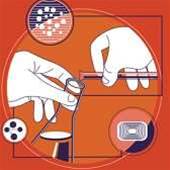
Professor Bruce Thomas, director of the University of South Australia's Wearable Computer Laboratory, said: "For continuous monitoring, you can take off one garment and put on another smart garment so that, instead of having just one heart monitor, you can have a wardrobe of them."
Professor Thomas admitted that his researchers were not the first to think of this technology, but claimed to be the first to develop a smart garment management system that actually works.
"The wardrobe has a touch screen on the outside and conductive metal bands spanning the hanging rail inside, with wires connecting it to a computer in the base of the wardrobe," he explained.
"When we place electronic hangers, each with their own ID and metal connection, on the rail, it detects the hangers and smart garments incorporating the conductive material and integrated electronics.
"The computer then identifies that hanger 123 has coat 45 on it, for example, which has heart monitoring data that needs to be downloaded and the hanger recharged."
Garments with communication technology and a wireless connection enable users to access heart monitoring through a Bluetooth or Zigbee network, eliminating the need for expensive heart monitoring equipment to be placed in each garment.
Professor Thomas speculated that future smart garments could be used for a range of other monitoring services such as at home outpatient care and for people with dementia.
Such patients could have a full life for as long as possible with a minimum level of intervention, and could be monitored without having to learn how to use a new device.
"The garments enable us to monitor vital statistics and activity levels, such as when they get up, walk around, make breakfast and dinner, or sleep," said Professor Thomas.
"But more importantly, we can determine if they are missing meals, fall over or stop moving.
"The technology can distinguish between normal and abnormal events and alert family or emergency services or, for people who live in retirement villages, alert local medical staff."


_(22).jpg&h=140&w=231&c=1&s=0)
.png&h=140&w=231&c=1&s=0)




_(26).jpg&w=100&c=1&s=0)

 iTnews Executive Retreat - Security Leaders Edition
iTnews Executive Retreat - Security Leaders Edition












_(1).jpg&h=140&w=231&c=1&s=0)



